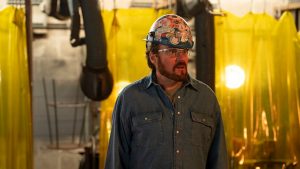Mechanical contractors are being called on to take a lead role as Canada’s construction sector marshals its forces to take on the net-zero challenge.
Delegates attending the recent Mechanical Contractors Association of Canada (MCAC) conference held in Halifax were told that their sector’s contractors and trades hold the key to a successful transformation to net-zero.
Investments in zero-carbon heating, ventilation, air conditioning, plumbing and other mechanical and controls systems are shown to contribute more to building efficiencies than, say, exteriors and cladding, panellists addressing the topic during a session said.
“There’s just unprecedented demand that’s going to be created in this sector from the transition to net-zero,” said panel host Rob LeForte of First Lake Solutions, a government relations consultant for MCAC.
“All of you folks are already seeing a lot of pressure. You’re seeing a lot of demand for your services. You’re seeing a lot of requests both from the private sector and I’m sure the public sector to put more energy-efficient products into the built environment.
“Are we ready?”
Clearly, governments have a major role to play in establishing policies, issuing hard regulations and creating incentives, the panellists noted.
The Canadian Net-Zero Emissions Accountability Act, which became law in 2021, enshrines in legislation Canada’s commitment to achieve net-zero emissions by 2050.
The federal government published the 2030 Emissions Reduction Plan in March 2022 and has established a number of funding mechanisms such as the Net-Zero Accelerator Fund and the Green and Inclusive Community Buildings (GICB) program.
The GICB program has proved a big hit, said panellist Scott Hammond, partner and senior mechanical engineer with Winnipeg-based SMS Engineering. His firm has been able to tap into the GICB on behalf of clients and in fact, the fund has been oversubscribed 10 times over, meaning demand has far outpaced available funding.
Projects have incorporated high-performance mechanical systems and in one case a new central energy system was set up for three buildings.
“You can’t underestimate what the value is that mechanical contractors have in this whole process,” said Hammond.
Expect the GICB to be extended, LeForte said.
“When they have an oversubscribed program, they say, ‘OK, this is something we should put more cash into,’” he said.
As design professionals, Hammond said, he and his colleagues now have no option but to plan for net-zero, with the goal less than 30 years away. They expect the buildings they create to have a lifecycle well beyond 2050 and they study climate change patterns that clearly indicate that in 2050 to 2080, periods of extreme temperature will be rampant across Canada.
“The projections are really lighting up across Canada,” he said. “We’ve touched basically every single province now to see some extreme temperatures for over half a month.
“We’ve got to transition to that low-carbon society.”
Panellist Corey Diamond, executive director of Efficiency Canada, noted his agency prepared a report last year that outlined what it would take to reach net-zero.
“Our model is, how to get governments to design and implement smart policies and programs, and smart is obviously where the rubber meets the road, especially for this audience,” Diamond said.
Reaching net-zero in one generation, he said, is “probably the most monumental task humans have ever undertaken, given the situation that we’re in and the design of our existing systems.”
Diamond outlined a possible strategy that would build on existing policies, which seem to be going in the right direction, but then injecting a radical reshaping of industrial policy, specifically in the mechanical contractors’ sector.
That is exactly what the U.S. is envisioning in its Inflation Reduction Act, Diamond said. Specific sectors will be targeted for overhaul, such as supply chains.
“Let’s put a process in place that would likely take a decade to start, to reshape entire sectors of how we do things,” suggested Diamond, referring to net-zero.
Panellist Syed Abid, director of commercial business, HVAC division, with Mitsubishi Electric Sales Canada, described how his firm markets new electrical construction devices and equipment with significant attention paid to education.
Net-zero education in the sector, broadly defined, can include collaborations within the Integrated Project Delivery (IPD) model, he asserted.
With net-zero as a project goal, Abid said, through IPD, mechanical contractors, electrical contractors, architects, cost consultants, the trades, maintenance contractors — everyone involved — should be at the table reducing the education gap.
“We can reduce that gap between education and training,” said Abid.
“The education starts right from the get-go.”
Follow the author on Twitter @DonWall_DCN









Recent Comments
comments for this post are closed